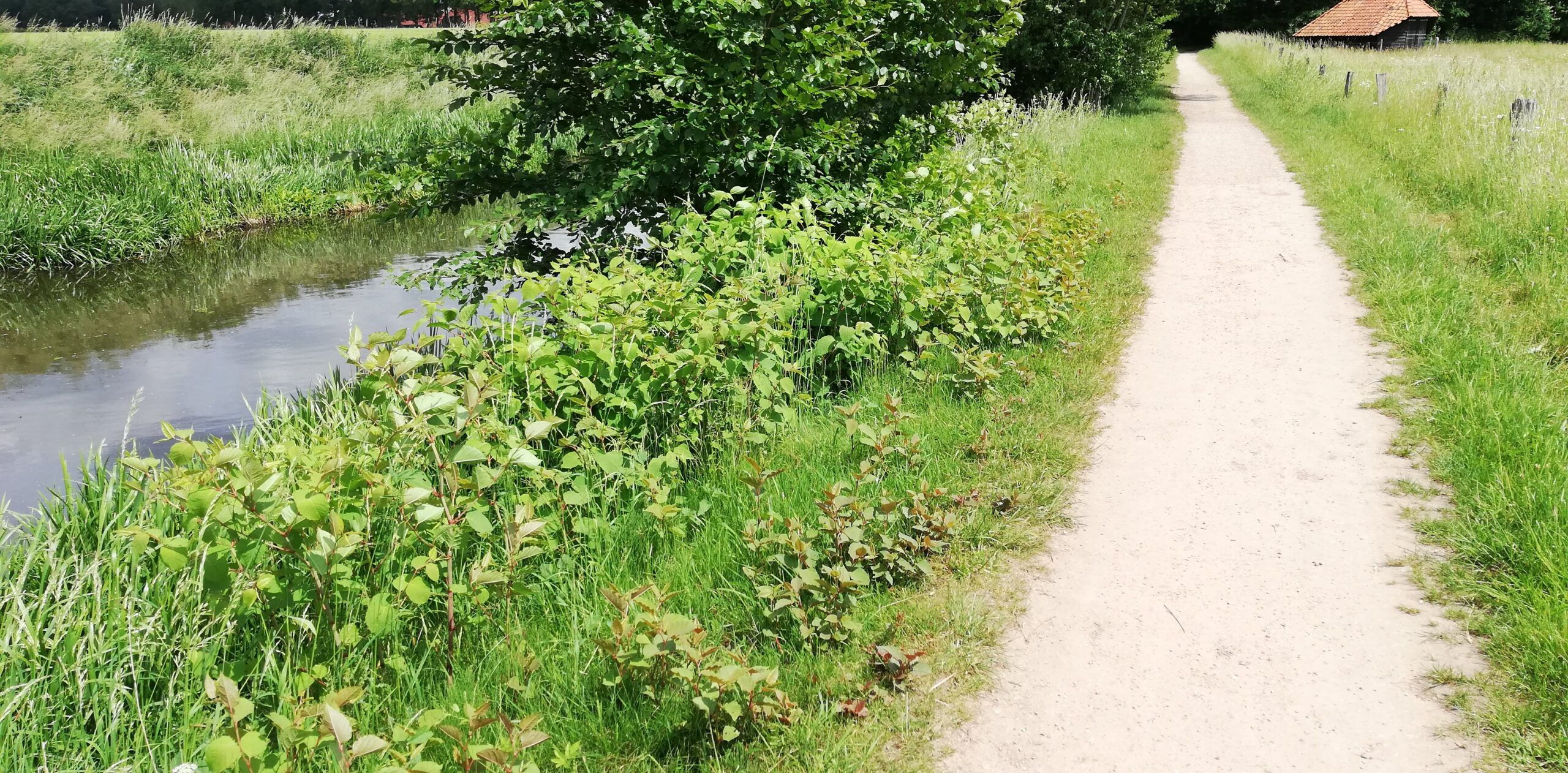Press release – Positive report about Tibach-treatment WUR will be published on 4th of july
ULFT – At the request of Tibach, affiliated with Smarthub Incubator Industrie (SHII) in Ulft, Wageningen University & Research started a research project a year ago at IJsselweide in Gendringen, in the municipality of Oude IJsselstreek.
The aim of this research was to assess the effectiveness of a unique control method developed by Tibach on the Japanese knotweed.
The Japanese knotweed is one of the biggest threats to our nature and infrastructure
The strong rhizomes and stems of the Japanese knotweed displace native plant species and can cause significant damage to dikes, buildings, pipelines, and roads. For example, the Japanese knotweed has already caused a lot of damage to the quay walls in the port of Rotterdam.
In a historic building in the city center of Amsterdam, the plant is growing in the foundations. The costs of removal and restoration amount to 300,000 euros (source: Het Parool, May 17, 2019).
How does the Tibach-method work?
In the ground surrounding the Japanese knotweed, freeze lances are installed to a depth of one meter. These freeze lances are cooled to -35ºC, rapidly cooling the soil. As a result, the roots of the plant freeze, eventually causing them to die off and decompose in the soil.
The method is environmentally friendly and one-time only
The Tibach method is safe, one-time, and environmentally friendly. Within a few days, a location can be cleared of Japanese knotweed, depending on the area to be treated and the depth of the roots. Excavation and transportation are no longer necessary as the plant’s stems are also treated. This eliminates the risk of new outbreaks.
Using this machine, with a coverage of up to 40 m2 per treatment, the method can be employed by government authorities and water boards, among others. In the future, both larger and smaller machines will be developed to efficiently treat various sizes of contaminated soil areas.
Results in Oude IJsselstreek
The municipality of Oude IJsselstreek recently signed an agreement of intent with Tibach based on previous successful results. In the meantime, the Japanese knotweed has been successfully eradicated in three locations within the municipality.
Scientific report of Wageningen University Research (WUR)
Tibach invited WUR to study this method to assess its effects on this plant. After taking various soil samples from a treated area, no living fragments of the Japanese knotweed have been found so far. It is also important to understand the effects on microorganisms and the seed bank in the soil. The final report from WUR has shown that cold treatment does not have an impact on them.
The research conducted by WUR has been completed, and the final report will be made public on Monday, July 4th at 14:00.
The suitability of this method for treating other invasive species is being investigated. A pilot project has already taken place in collaboration with WUR and EIS (knowledge center for insects) to assess the effect of cold treatment on the Mediterranean seed bug, also known as the terror ant. This invasive species is becoming an increasing problem in the Western world.
More information
More information about the Tibach treatment method can be found here.
Below several media/press publications:
- NRC – Een temperatuur van min 10°C in de bodem krijgt de Aziatische duizendknoop eronder
- NOS Radio 1 Journaal – Hoe bestrijd je de Japanse duizendknoop?
- Omroep GLD – Door deze ontdekking legt Japanse duizendknoop wél het loodje
- De Gelderlander – Deze unieke machine moet een einde maken aan de Duizenknoop
- Binnenlands Bestuur – Vriesdood voor duizendknoop

